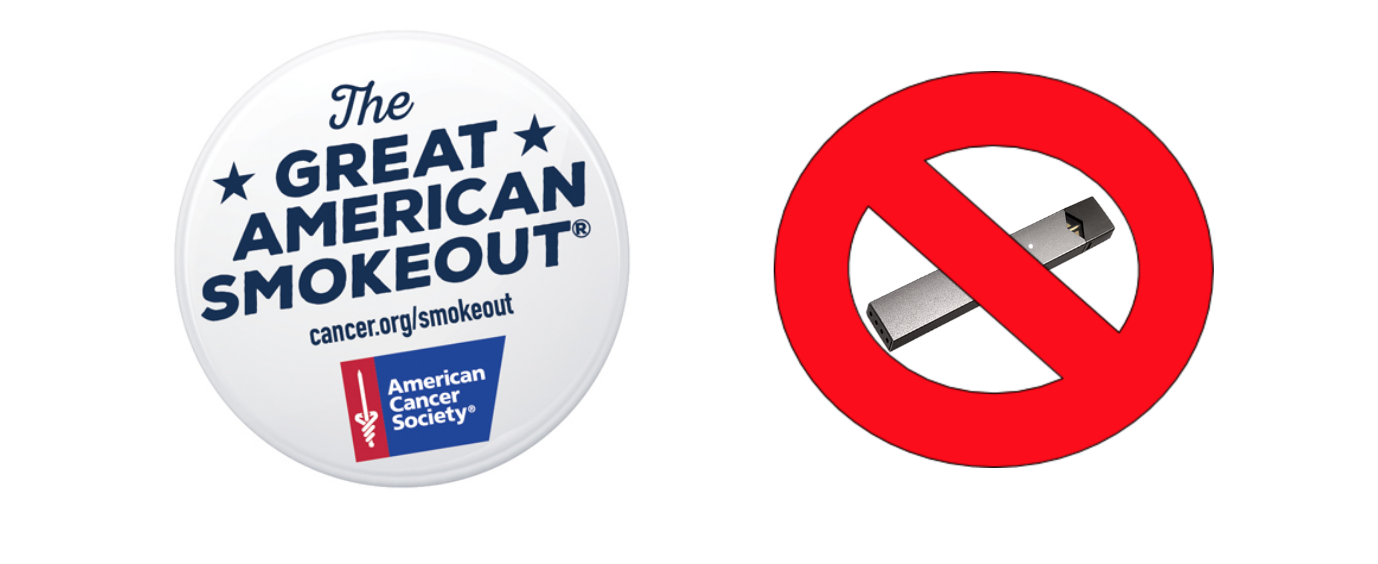Did you know that today is the Great American Smokeout? A nationwide event held on the third Thursday of November, the Great American Smokeout is sponsored by the American Cancer Society to draw attention to the health impacts of cigarette smoking and exposure to second hand smoke and to encourage people to stop smoking.
When this event began in the 1970s, cigarette smoking was commonplace and people were just beginning to learn about the effects of tobacco and nicotine on their lungs and other organs. In the years since, there has been a dramatic shift in public perception of the risks of cigarette smoking. With all the enactment of a myriad of laws designed to reduce smoking in the late 1980s and 1990s and a host of public awareness campaigns, cigarette smoking among adults dropped from 42% in 1965 to about 15.5% in 2016. And cigarette smoking rates are even lower among teens with only 7.6% smoking tobacco in 2017.
With all of these advances, the Great American Smokeout was starting to feel less relevant. But with the alarming trend of vaping by teens, there is clearly still a need to educate people about the addictive nature of nicotine and the health impacts of cigarette smoking, including in electronic form. The vaping trends are alarming. According to the CDC, vaping by high schoolers jumped from just 1.5% in 2011 to 20.8% in 2018. Even more concerning is the fact that e-cigarette use by high schoolers increased by 78% from 2017-2018 (from 11.7% to 20.8%). If use increase continues at that pace, in just one more year over one third of high schoolers will be using electronic cigarettes in 2019.
Why are electronic cigarettes so appealing to teens? A product originally conceived to help adults quit smoking, some electronic cigarette devices appeal to teens because they are “cool”, easy to use and teens may not understand that the “juice” they are using contains high levels of nicotines. To learn more about one popular device, the Juul, and its impact on teen e-cigarette use and nicotine addiction, watch this interesting video.
Happily, these trends have also caught the attention of the FDA, which has announced a set of measures aimed at reversing these trends including limiting the sales of flavored e-cigarettes to teens. But it will take more than regulatory action to curb teen vaping. Make a pledge today to talk to your teens about nicotine addiction and the health hazards of vaping. If your teen is vaping, they may need help overcoming nicotine dependency before they can successfully quit.
https://www.cdc.gov/mmwr/volumes/67/wr/mm6745a5.htm?s_cid=mm6745a5_w
https://www.cdc.gov/tobacco/data_statistics/fact_sheets/youth_data/tobacco_use/index.htm

